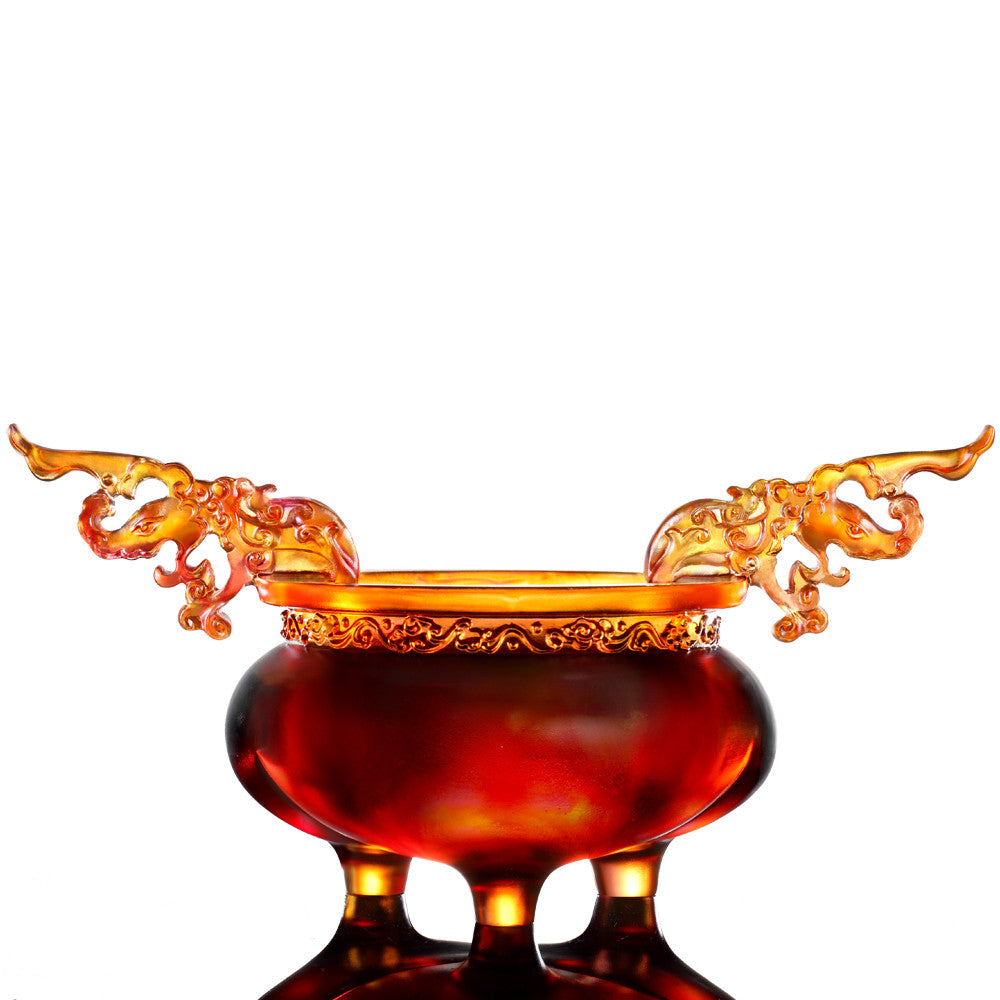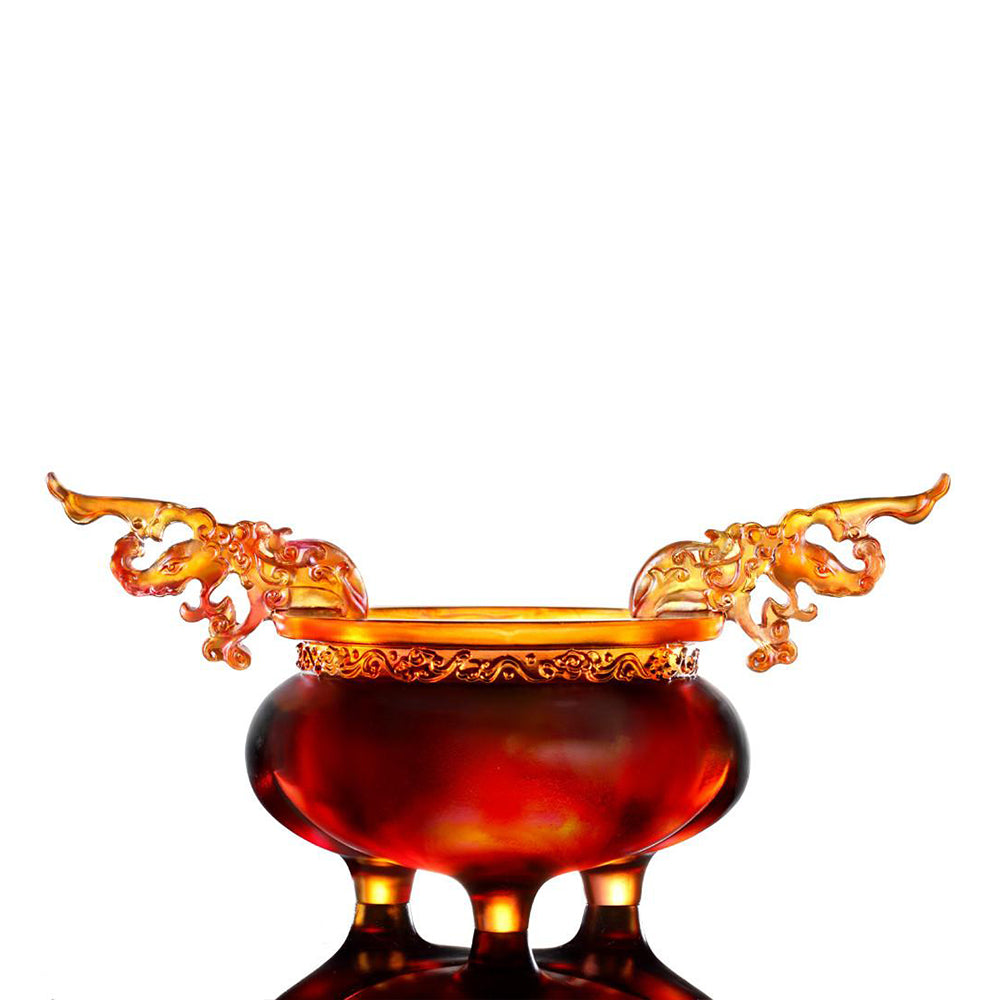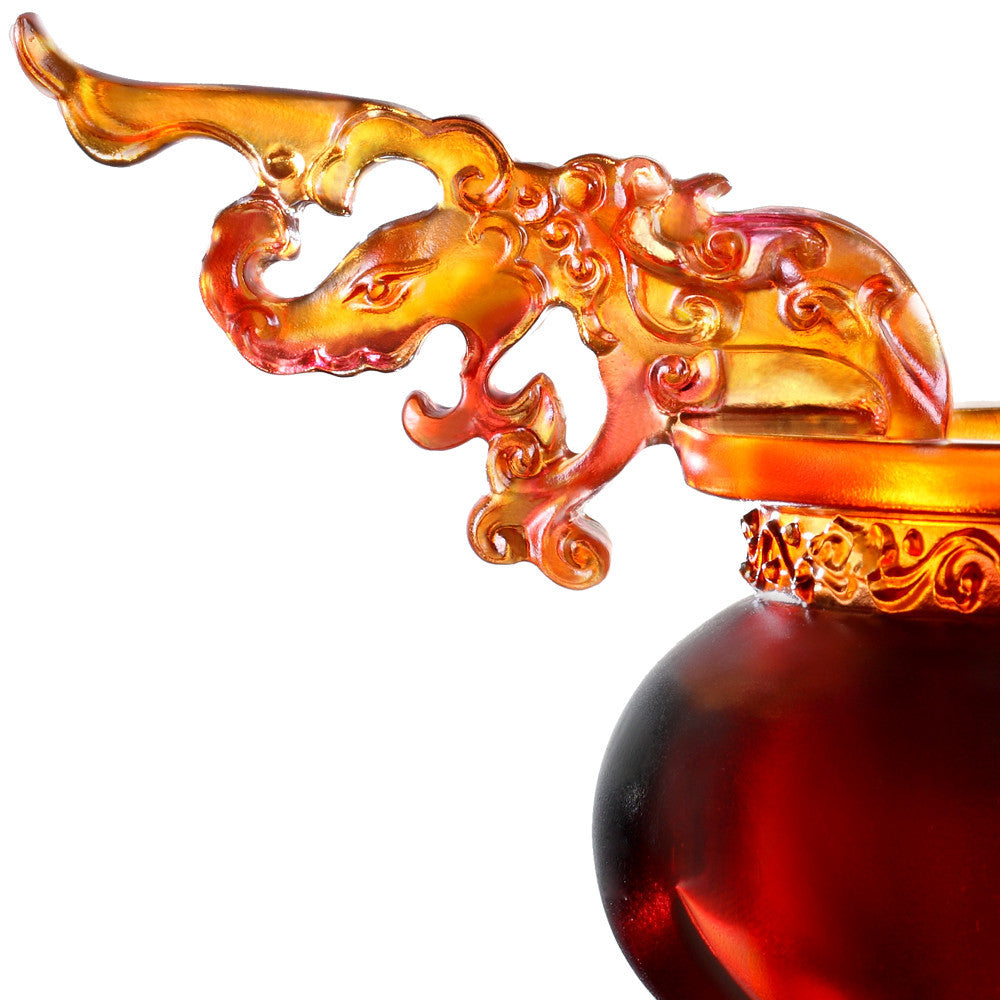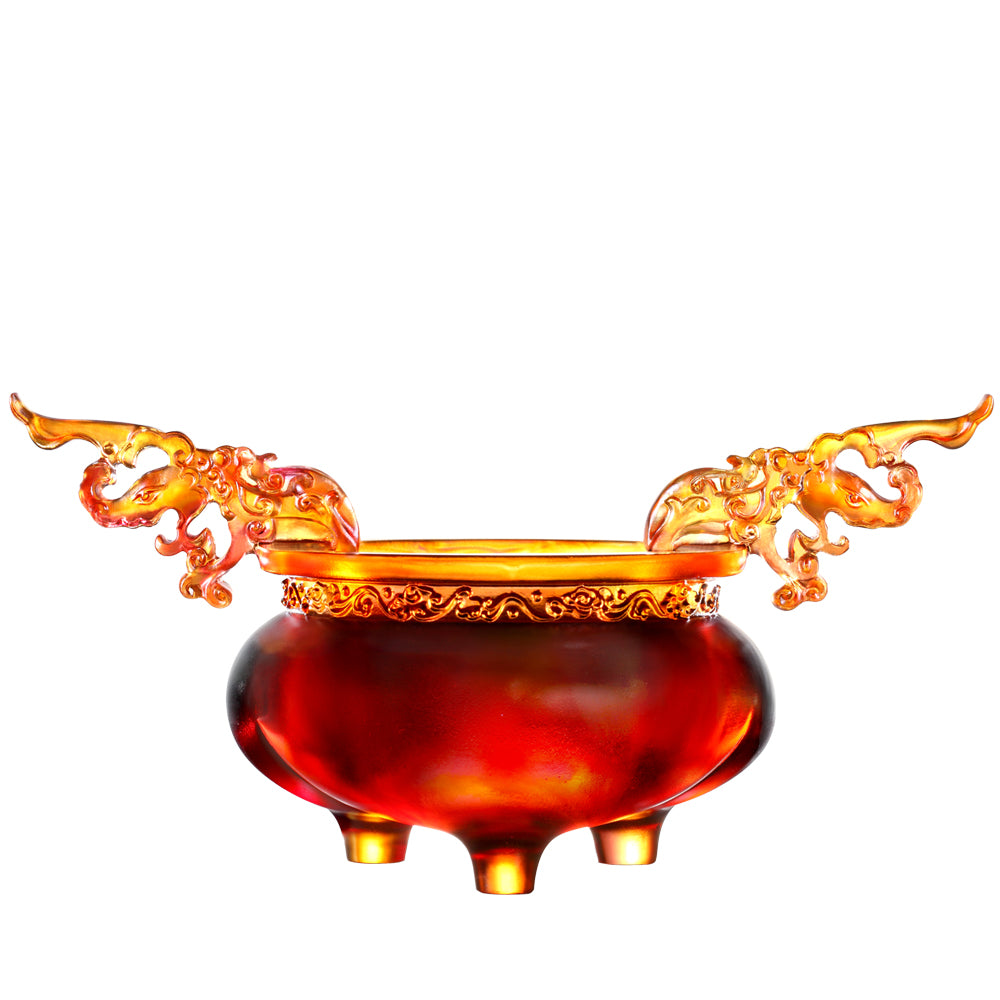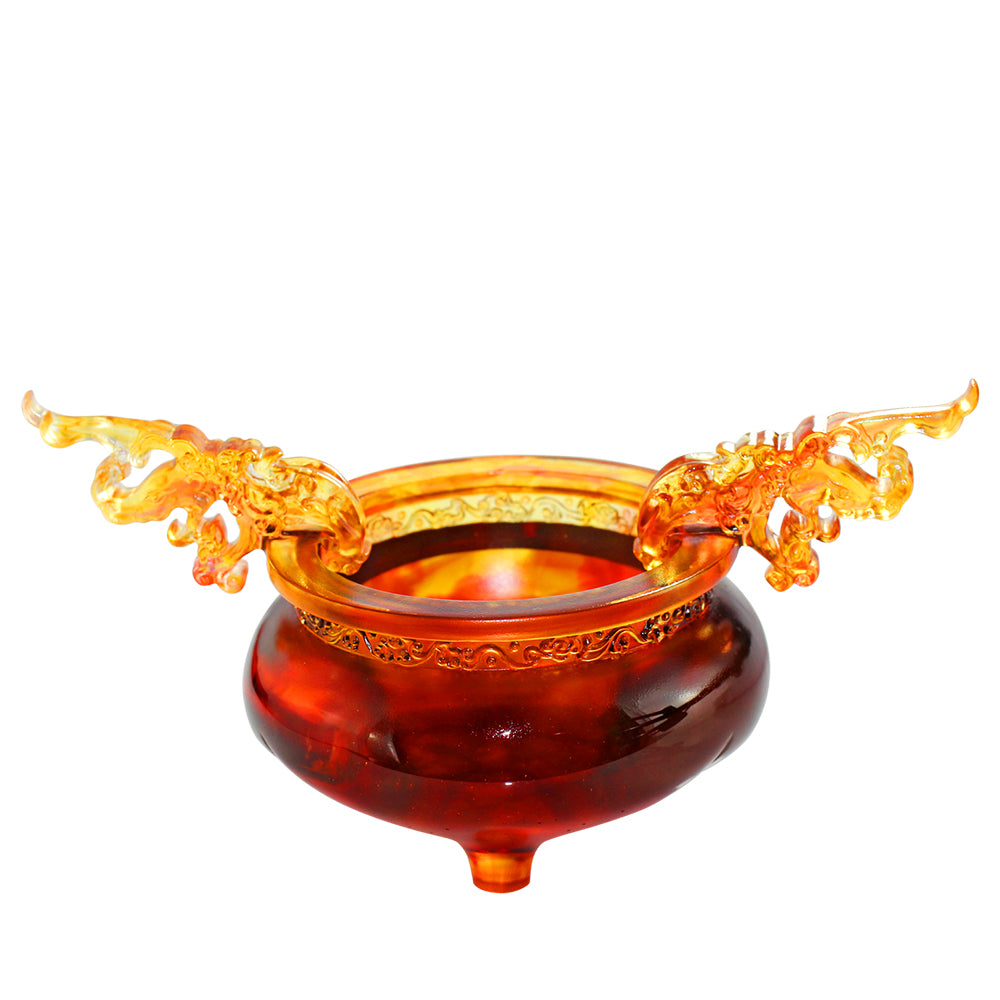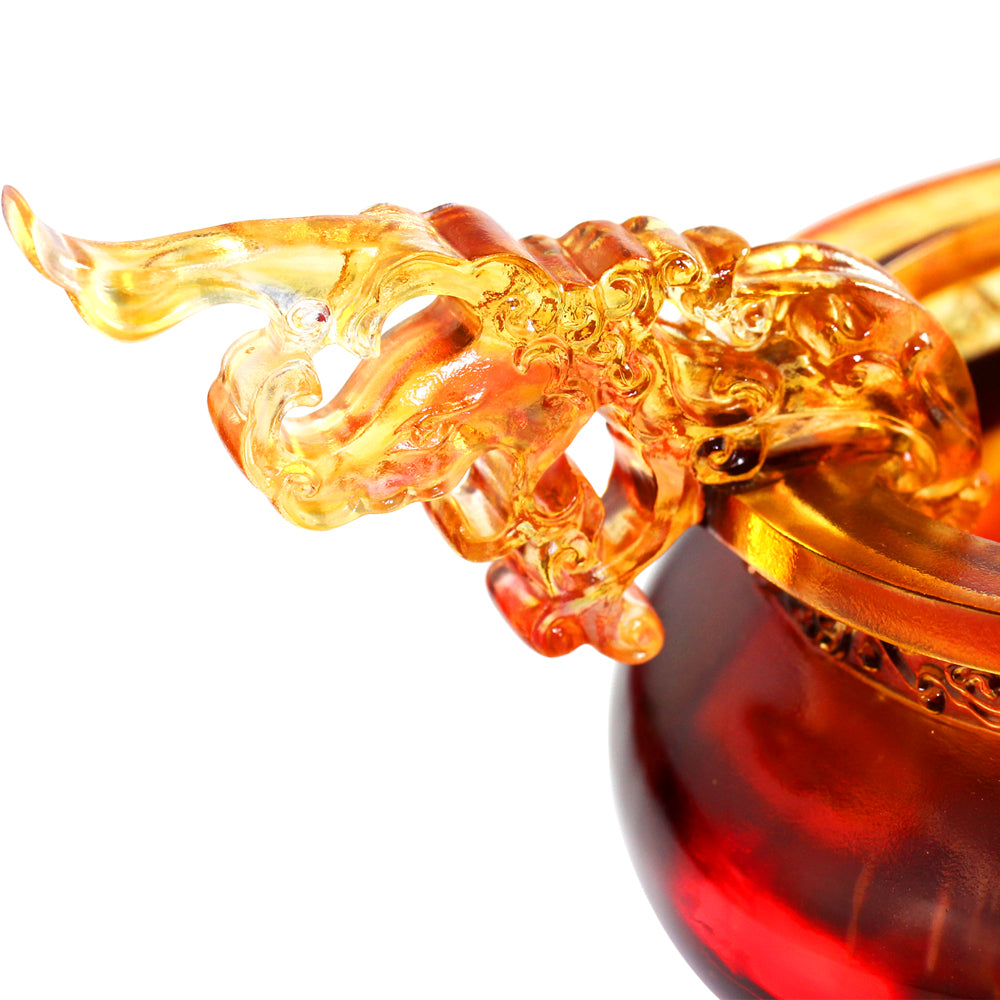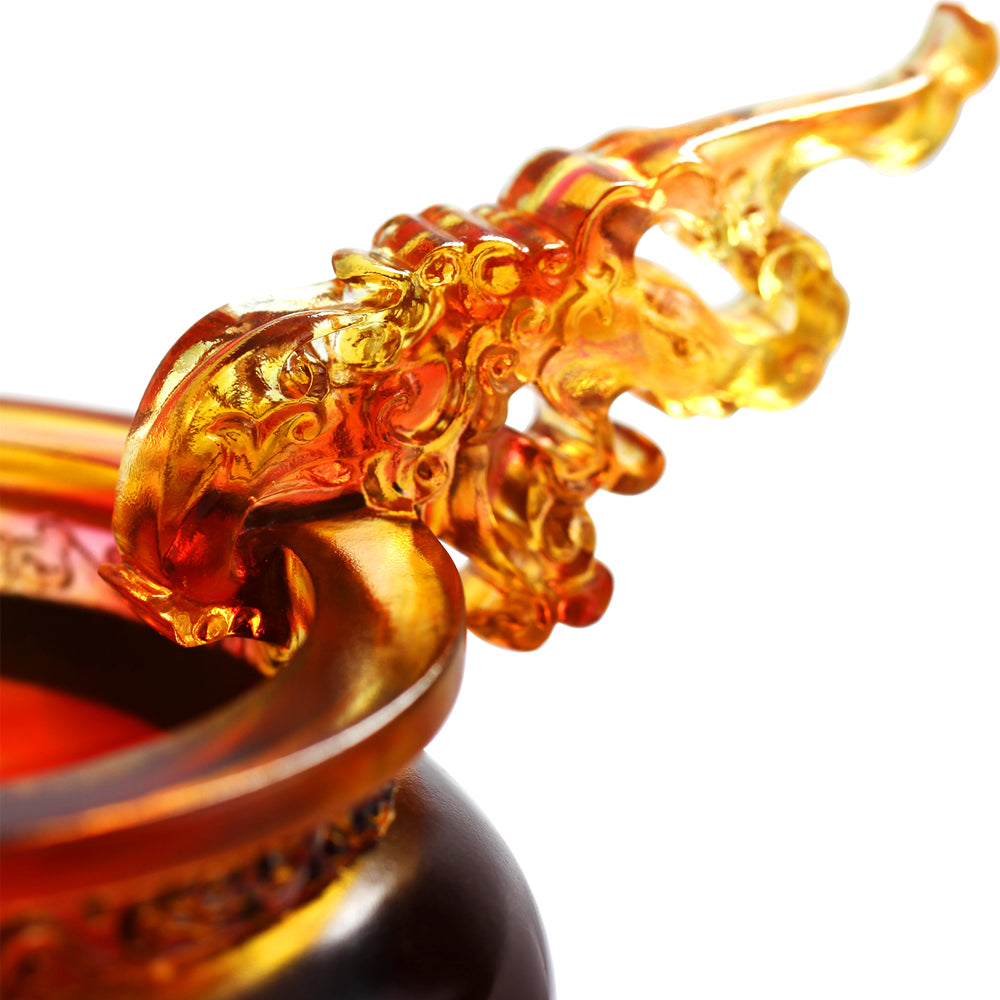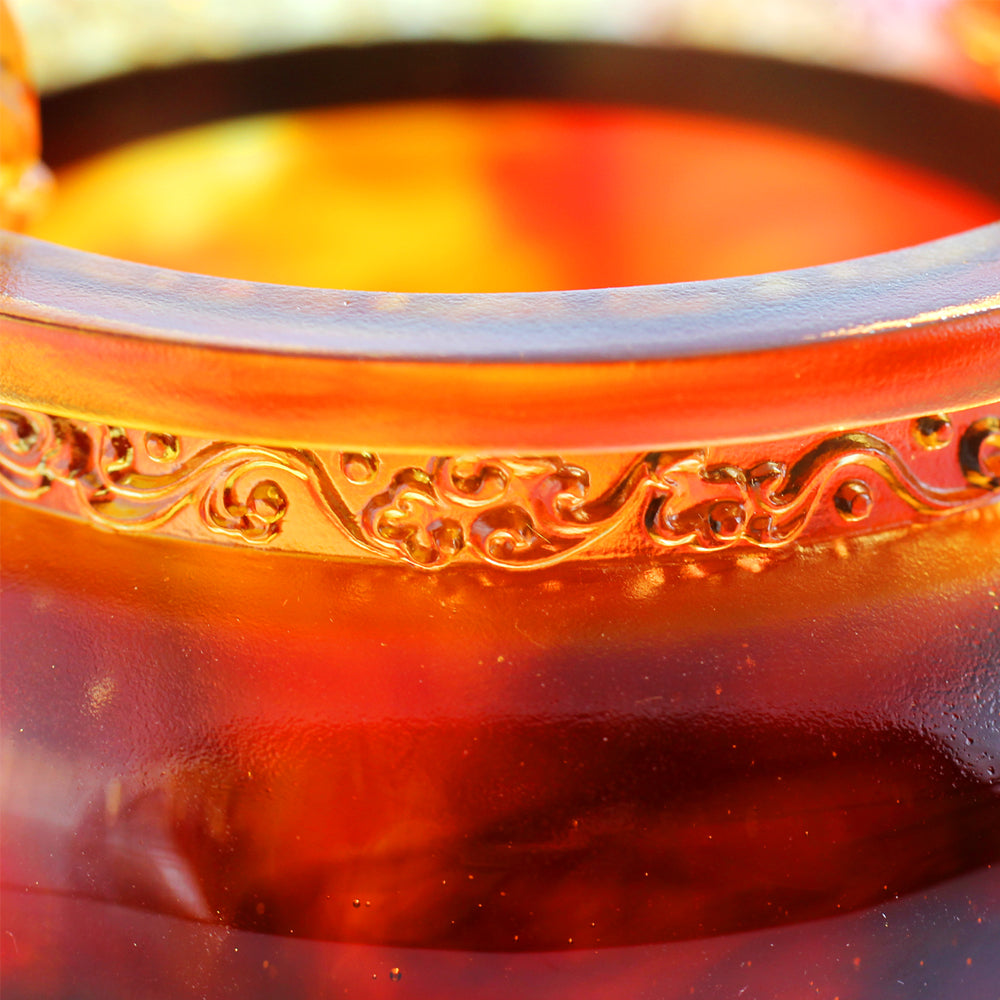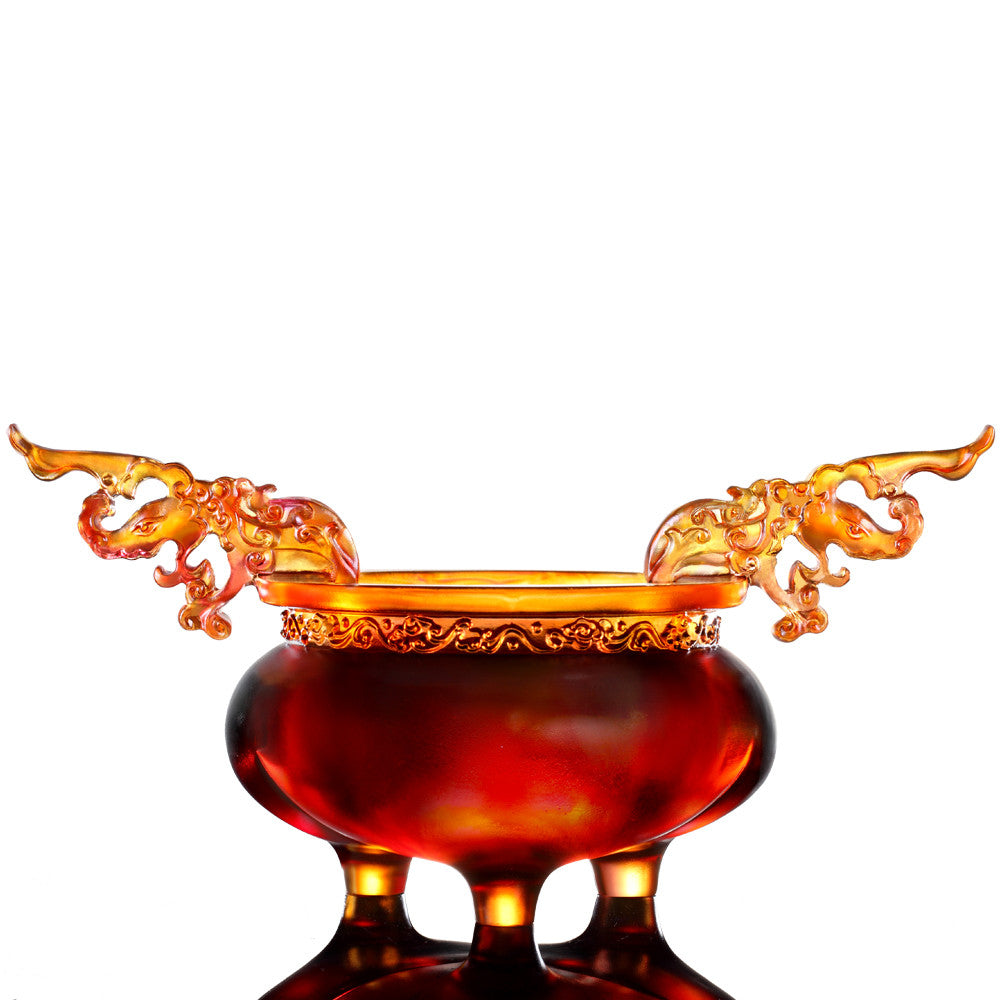
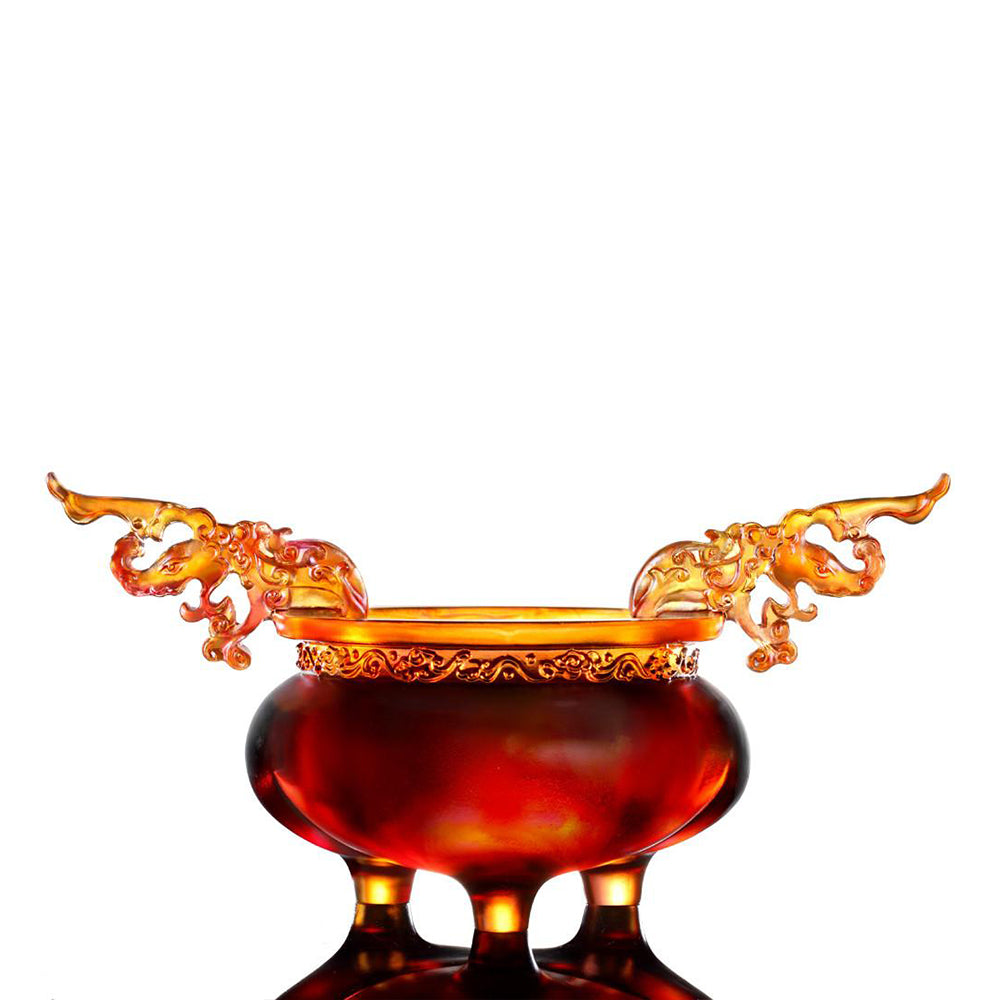
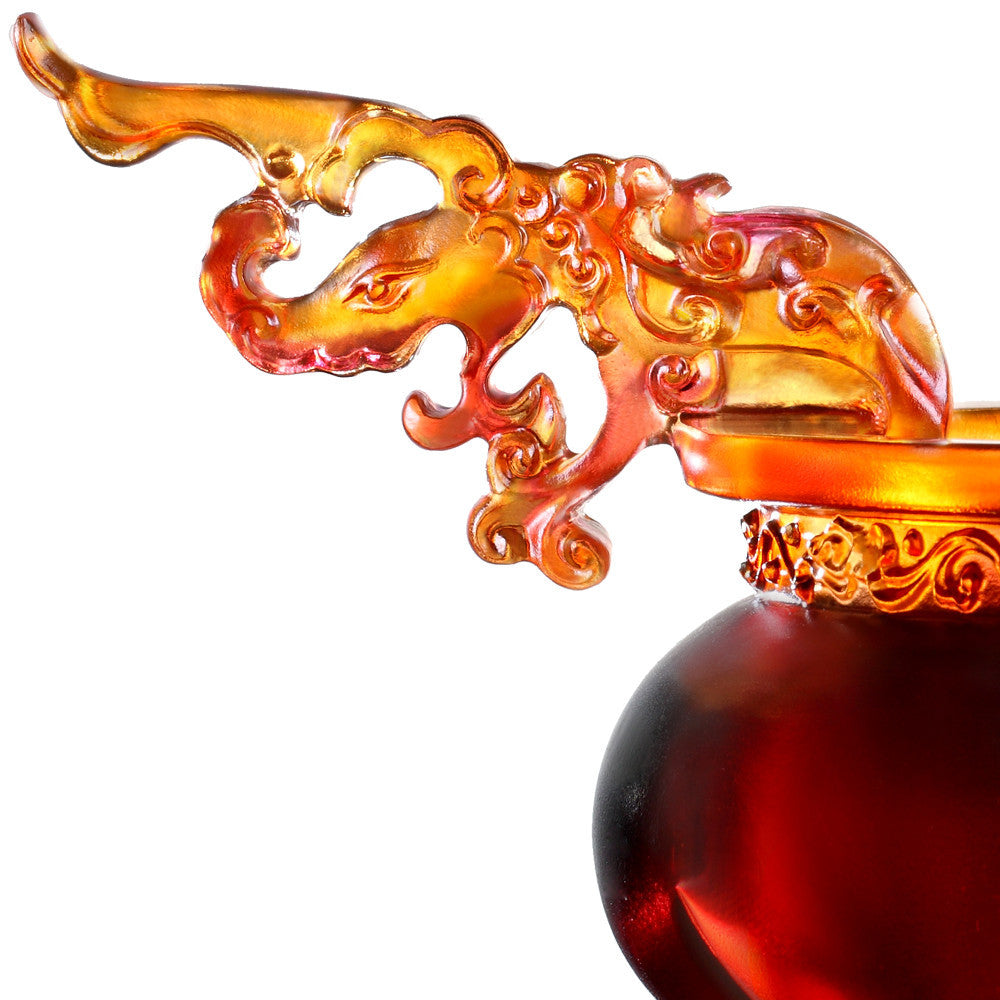
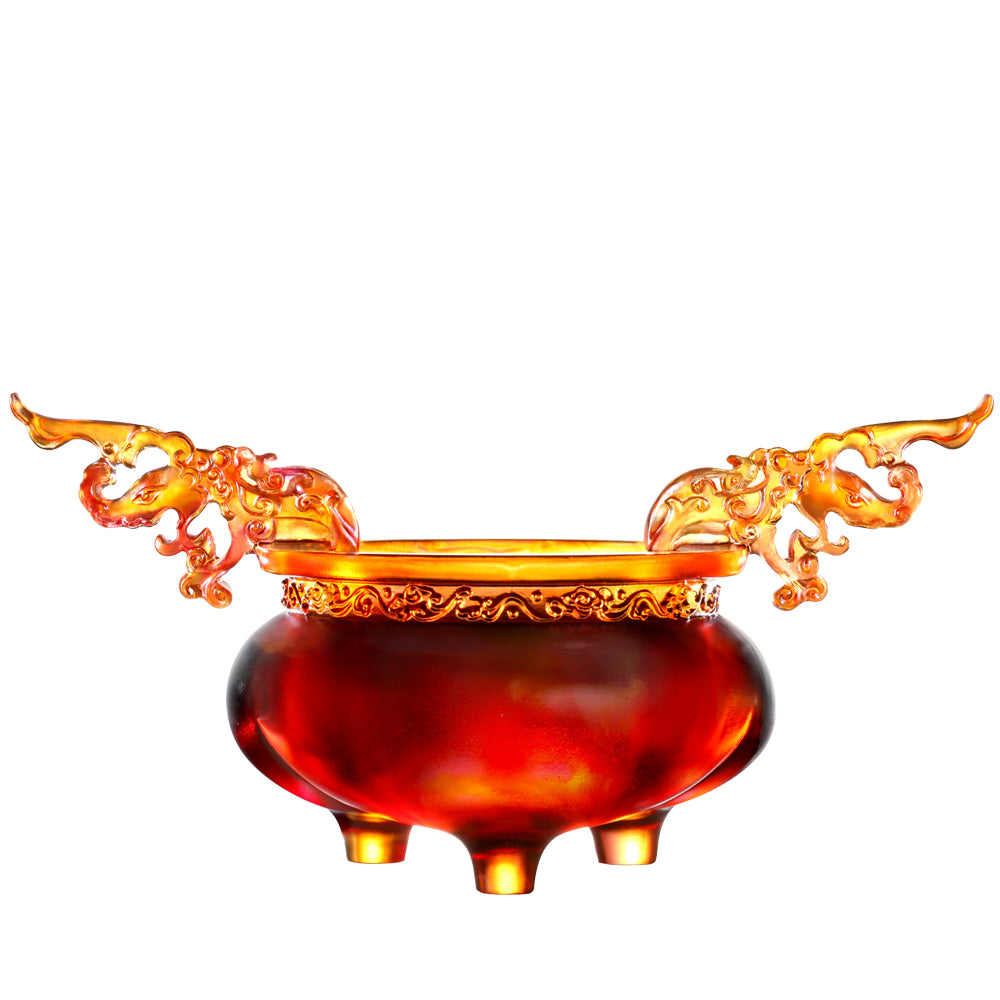
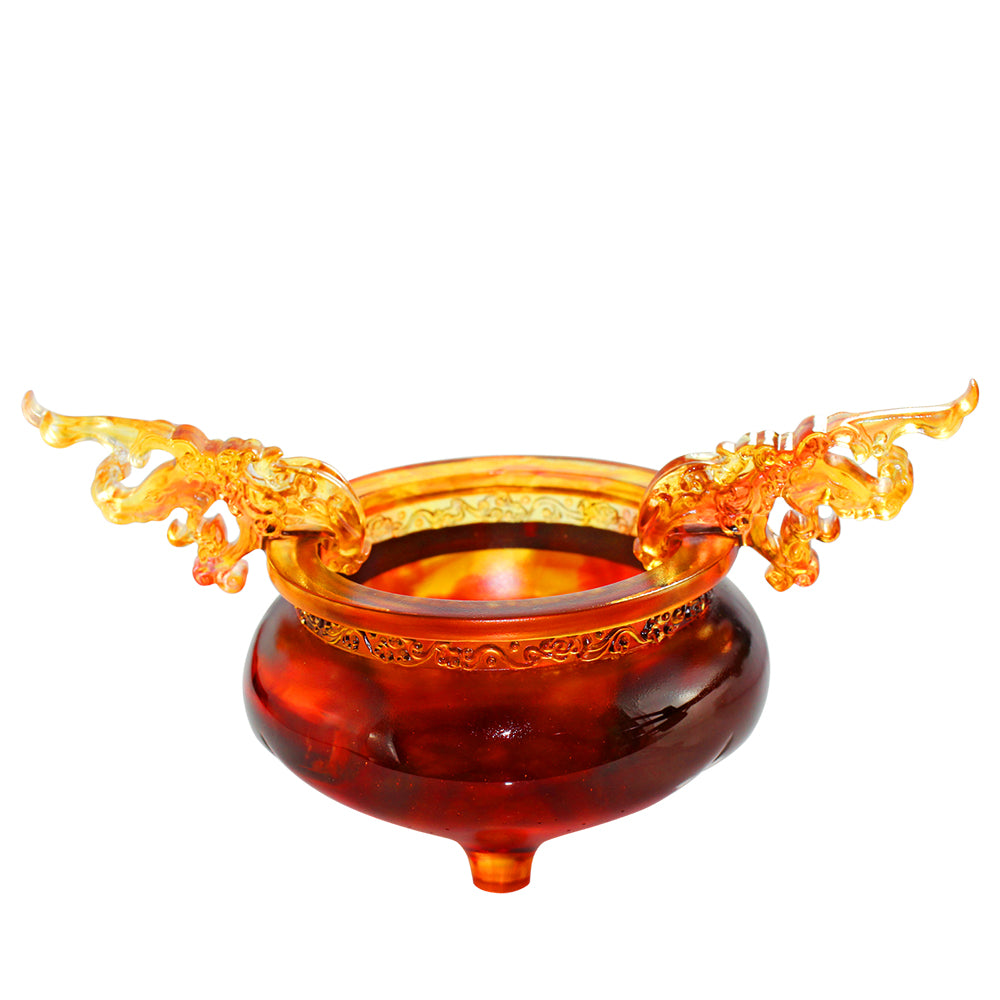
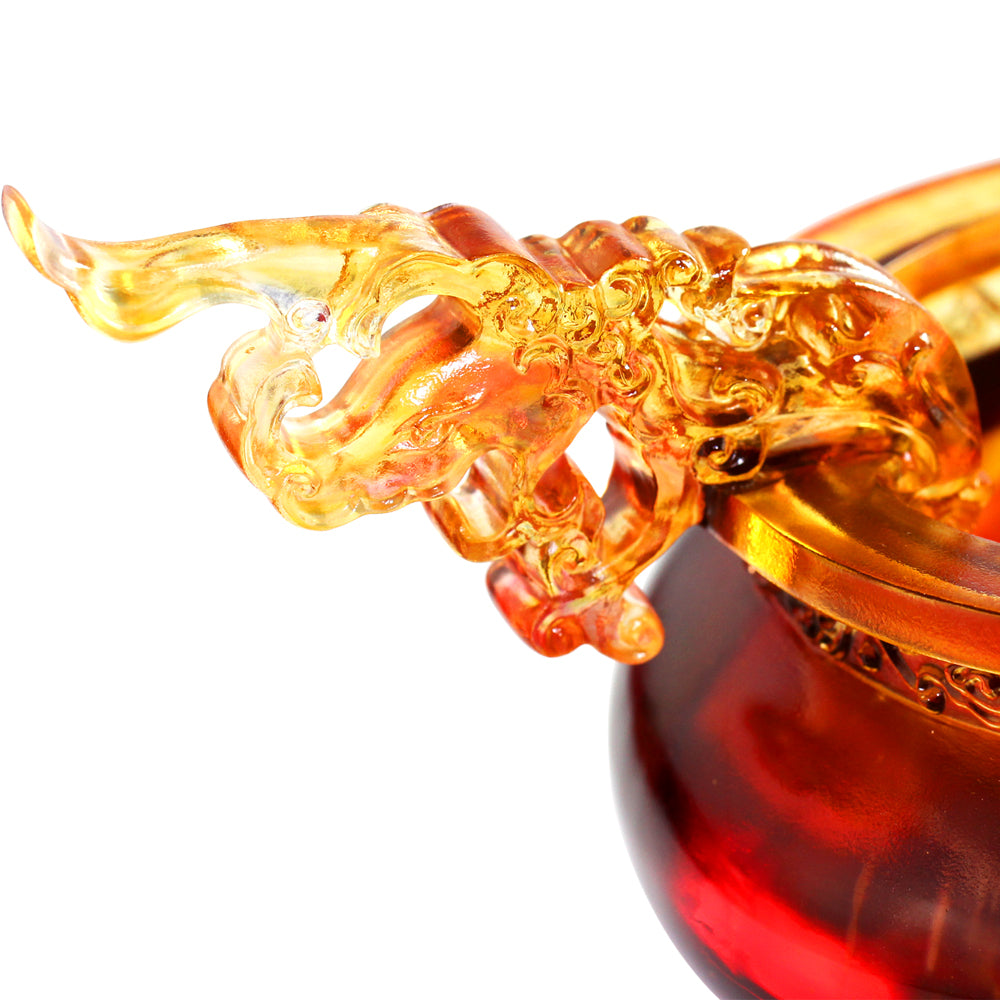
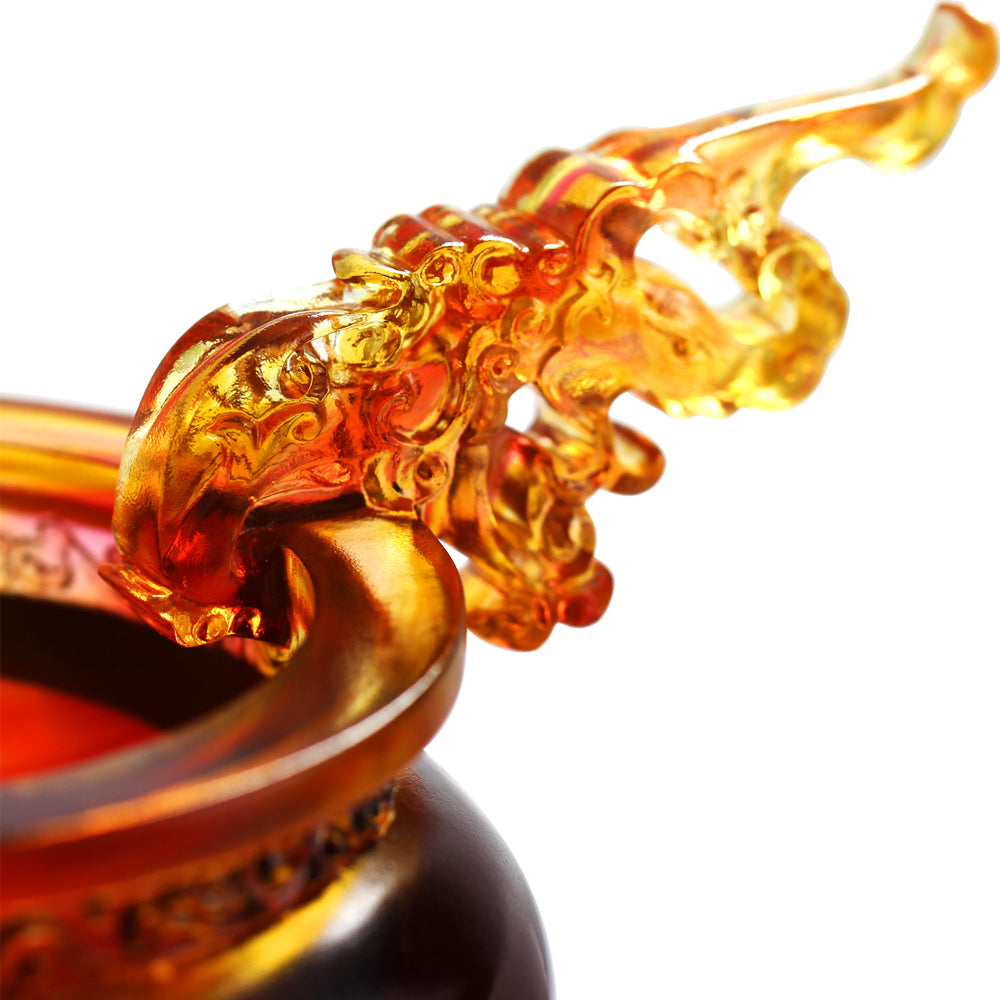
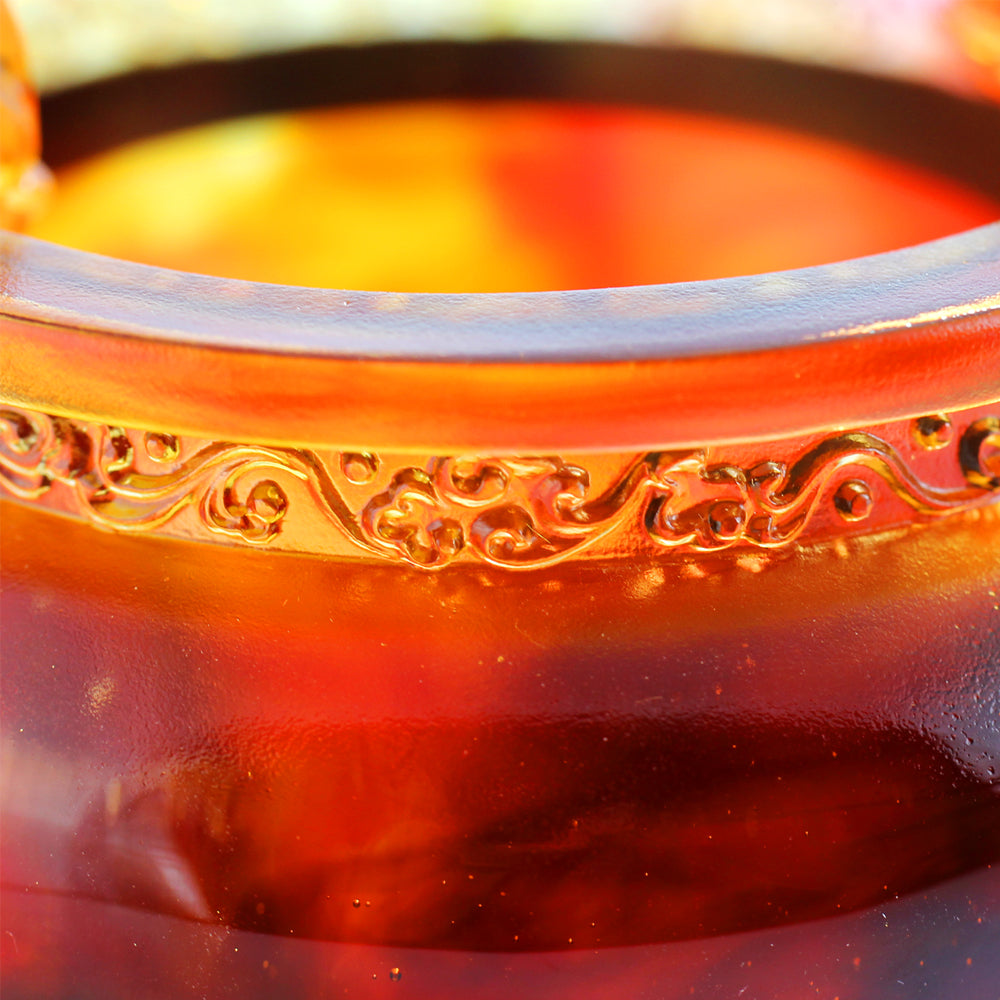
|
Design Concept: The scroll vine dragon motif transforms into the double ears of the Ding cauldron, which, after undergoing meticulous artistic treatment, evoke the graceful wings of celestial beings, with twin dragons guarding and invoking prayers for peace and harmony. The dragon heads at the ears are crafted with translucent clarity, gradually thickening towards the body with delicate hollowing out, a testament to the finesse of the lost-wax casting method applied to glass. The belly of the cauldron gently bulges with thicker walls, and the rim is adorned with a continuous vine pattern, subtly suggesting the perpetuity of lineage and the abundance of blessings and wisdom. This cauldron, steeped in ancestral tradition, symbolizes not only the hope for abundance and security in life but also serves as a vessel for sacrificial rituals. The circle, deeply symbolic, represents the heavens, inclusivity, and the embodiment of abundance and fulfillment. 卷草龍紋幻化成鼎的雙耳,經藝術化處理之後,如同展翅飛天的雙翼,雙龍守護,祈願祥和平安。鼎耳處龍頭晶瑩透光 ,身軀處逐漸增厚,並有局部鏤空的處理,憑藉琉璃脫蠟鑄造法,得到完美演繹。鼎腹略鼓腹壁較厚,鼎口雕有一圈卷草紋,連綿不斷,暗含子孫萬代永續,福慧滿盈之意。鼎是先人烹煮之器,以鼎祭天,希望事事不缺,生活不虞。圓,是天,是包容,是豐饒滿盈的象徵。 |
|||
|
|||


